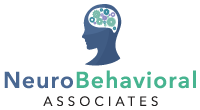Trauma leaves an invisible mark on the brain, fundamentally altering how children and adults process information, regulate emotions, and navigate the world around them. For parents, educators, and healthcare providers working to support neurodiverse children, understanding how trauma impacts the mind is critical for providing the most effective support.
The Developing Brain Under Stress
The human brain continues developing well into the mid-twenties, with the most critical growth occurring during childhood and adolescence. So if you have a child within this age range, now is the time to focus on their mental wellbeing! When trauma occurs during these formative years, it can significantly impact brain architecture and function.
During traumatic experiences, the brain’s stress response system becomes more active. This imbalance can persist long after the traumatic event, affecting a child’s ability to learn, form relationships, and regulate their emotions.
Key Brain Regions Affected by Trauma
Understanding how trauma impacts the brain can help parents and providers better understand and explain many of the behavioral and emotional responses seen in children who have experienced adversity.
The limbic system, which includes the amygdala and hippocampus, plays a central role in processing emotions and memories. When trauma occurs, the amygdala can become hypervigilant, triggering fight-or-flight responses even in non-threatening situations. This hyperactivation can persist long after the traumatic event, causing children to react to everyday stressors as if they were life-threatening emergencies.
The prefrontal cortex, often called the brain’s “CEO,” is responsible for executive functioning. This includes planning, decision-making, impulse control, and emotional regulation. Trauma can severely impair prefrontal cortex development, making it challenging for children to manage their emotions or focus on tasks. This is particularly relevant for neurodiverse children who may already face executive functioning challenges.
How Trauma Manifests in Children
Children who have experienced trauma may act out in ways that remind us of behavioral problems, leading to frequent misdiagnosis. Emotional dysregulation often presents as difficulty managing emotions, sudden mood swings, or emotional outbursts that the child cannot control.
A child who has experienced trauma may also have a complete meltdown over a minor disappointment or seemingly small changes in routine. These children may seem perpetually “on edge,” scanning their environment for danger even in safe spaces like their classroom or home. They might jump at unexpected noises, have trouble sleeping, or struggle to focus on activities because they’re constantly monitoring their surroundings.
Dissociation represents another common trauma response, where children mentally “check out” during stressful situations. Teachers and parents might notice these children staring off into space, getting distracted easily, or zone off when being spoken to.
The Intersection of Trauma and Neurodiversity
For neurodiverse children, trauma can create additional layers of complexity that require specialized understanding and custom treatment plans. Children with autism, ADHD, or other neurodevelopmental conditions may be more vulnerable to traumatic experiences, putting them at even higher risk.
What might appear as worsening autism or other neurobehavioral symptoms could actually be trauma responses layered on top of existing traits. For example, a child with ADHD who has experienced trauma may exhibit more severe attention difficulties, increased impulsivity, or heightened emotional reactivity.
The challenge lies in distinguishing between trauma responses and neurodivergent characteristics, as both can manifest in very similar ways. This is why getting your child the proper support and help they need as soon as you notice symptoms is key.
Supporting Trauma-Affected Children
Creating effective support systems for trauma-affected children requires an approach that addresses both their immediate safety needs and their long-term healing. Establishing a safe, predictable environment forms the foundation of trauma recovery. Parents – this starts with you! By maintaining consistent routines that help children know what to expect, setting clear and fair expectations, and ensuring reliable relationships with caring adults, your child’s nervous system can begin to calm.
As your child begins to gain professional help and a dedicated treatment plan, their routine may shift depending on the recommendations of the provider.
These approaches may include cognitive-behavioral therapy, play therapy, and art therapy among other treatments. The key is finding the right therapeutic approach that matches the child’s developmental level and specific needs.
Supporting your family unit during this time is equally crucial, as trauma affects not just the individual child but the entire family dynamic. Parents and caregivers may need support to understand trauma’s effects on brain development and behavior, which is why seeking therapy as a caregiver can also be beneficial!
The Role of Schools and Communities
Educational environments play a crucial role in supporting trauma-affected children, as school often represents the most consistent and structured part of a child’s day. Teachers and school staff who understand trauma’s neurobiological effects can implement classroom strategies that promote felt safety and emotional regulation.
This might include providing sensory breaks for overstimulated children, offering choices to increase a sense of control and agency, or using mindfulness techniques to help children manage stress and anxiety. Schools can also create calm-down spaces where children can retreat when feeling overwhelmed.
When communities understand trauma’s impact and work together to create safe, supportive environments, children have multiple opportunities for healing and growth.
Building Resilience on The Path to Healing
The key to successful trauma recovery lies in recognizing trauma’s impact early and providing comprehensive trauma-informed care that addresses the child’s unique needs. This requires ongoing collaboration between families, schools, healthcare providers, and communities to create a network of support.
Understanding how trauma affects the brain is just the first step in this process, but it’s a crucial foundation that enables all stakeholders to respond with compassion and knowledge. With the right support, children can develop the skills they need to thrive despite their traumatic experiences.
Ready to learn more about how trauma might be affecting your child or students? Contact Neurobehavioral Associates today for comprehensive evaluations and treatment approaches tailored to your family’s unique needs.
Sources
- Perry, B. D., & Szalavitz, M. (2006). The Boy Who Was Raised as a Dog: And Other Stories from a Child Psychiatrist’s Notebook. Basic Books.
- Van der Kolk, B. A. (2014). The Body Keeps the Score: Brain, Mind, and Body in the Healing of Trauma. Viking.
- Teicher, M. H., & Samson, J. A. (2016). Annual research review: Enduring

